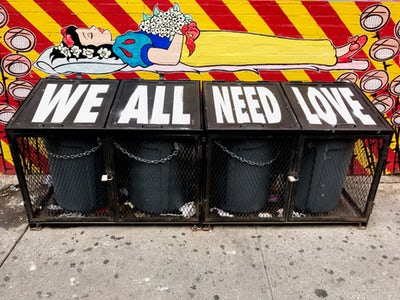|
I had an entirely different blog planned for today. It all changed when I heard about the mass shooting in Jacksonville, Florida. We are hearing about this way too often. It got me thinking. It’s clear we have a government that is not acting. So, good news, bad news its up to us. What’s good about it is, it makes individuals take more responsibility and it makes us act together for a greater good.
There are two courses of action that come from this kind of prevailing violence 1) get your guns and barricade yourself, or 2) Be aware of your neighbors and when someone needs help get together with others and help. Most shooters are isolated and feel alone and persecuted. But if neighbors notice someone who is isolating and can offer help, support and caring there can be a very different outcome. We are a very isolated culture. We each are focused on our family or ourselves. We don’t ask for help. We don’t offer help for the most part. We are the only country in the free world that has this problem. Dr. Gary Slutkin, a medical doctor who worked on disease epidemics in India, Africa and other countries came up with the brilliant analysis that violence is this country is also an epidemic and can be effectively treated just as medical epidemics can. He has successfully used this model in some neighborhoods in Chicago, New York, New Orleans. Info on the Cure Violence model: “The Cure Violence Health Model uses epidemic control method to reduce violence. We train carefully selected members of the community — trusted insiders — to anticipate where violence may occur and intervene before it erupts. And we engage the entire community to change behavior and norms. Just as we have now discovered that it is more effective and cost saving to treat drug addiction as a health issue than to punish it, it likewise makes more sense to prevent events, provide treatment for people at high risk, and change social norms. Like all potentially harmful behaviors – drug addiction, smoking, eating too much, exercising too little, risky sexual behavior and other behaviors – violent behavior can be understood, diagnosed, and treated through a health lens. Essential Elements The Cure Violence Health Model adapts methods used to stop the transmission of some of the most deadly diseases, including AIDS, cholera, and tuberculosis. These disease control methods work by 1) interrupting transmission of the disease, 2) reducing the risk of the highest risk, and 3) changing community norms. Implementation The Cure Violence Health Model has been successfully replicated dozens of times around the world – in places like New York City, Chicago, and New Orleans as well as San Pedro Sula, Honduras; Cape Town, South Africa; and Juarez, Mexico. And even in some smaller cities – like Yonkers, NY. If you are in a community with serious violence, you should consider the Cure Violence Health Model. Who Should Implement the Cure Violence Health Model? Any community that has a problem with violence should consider implementing the Cure Violence Health Model. In order to start implementing the Cure Violence health model, someone from the community needs to step up and champion the cause. This can be anyone from the community – a health department, an elected official, a pastor, a community organization or even a concerned citizen. Whomever initiates the process, our team can help guide you through this process. You can start by participating in one of our monthly webinars for new communities. Path to implementing Cure Violence health approach:
In order for the model to be effective, the program must be implemented correctly. The Cure Violence organization can help to ensure fidelity to the model through our technical assistance and training program. If you are interested in implementing the Cure Violence Health Model in your community, please participate in one of our monthly webinars for new communities. Implementing the Cure Violence model: Trained credible messengers detect potentially violent events and interrupt. them to prevent violence. Formulate and regularly update (daily, weekly, and quarterly) a strategic plan of action for gathering information and assessing its accuracy and use.
How can we implement this approach in our community to keep everyone safe. We are all connected. If one is not safe none of us are. With sadness for this latest violence and for what has happened in our schools. My best to you, Dianne, Accountability Coach
0 Comments
Leave a Reply. |
